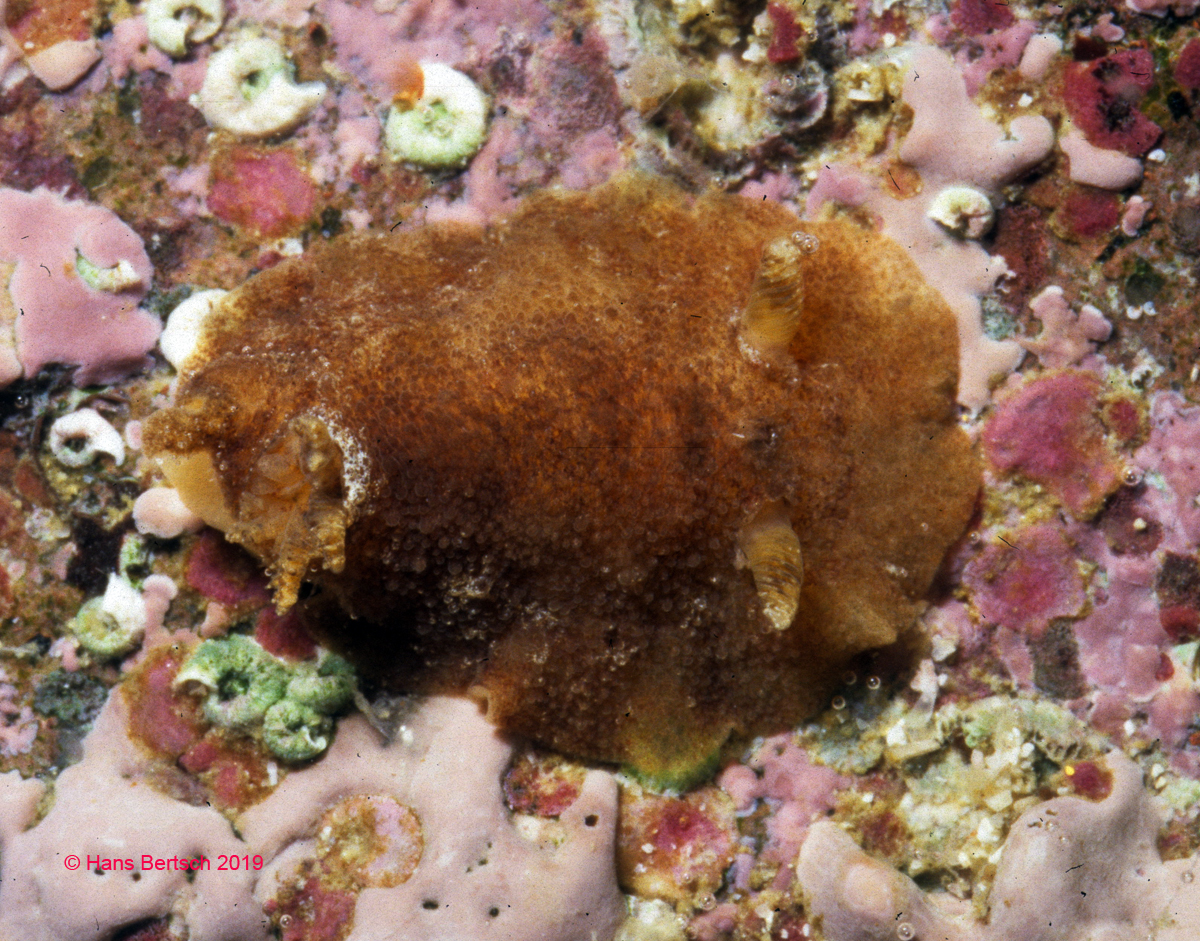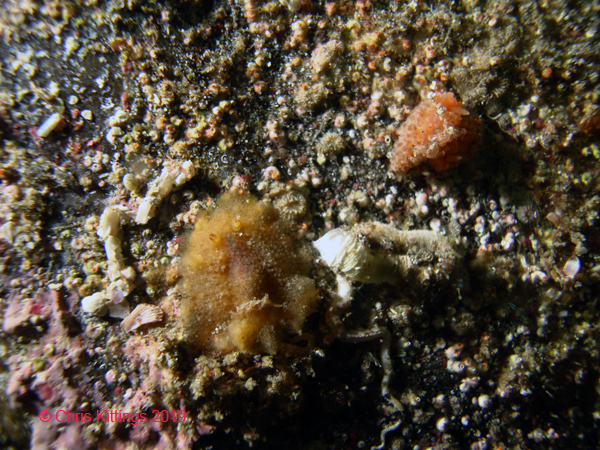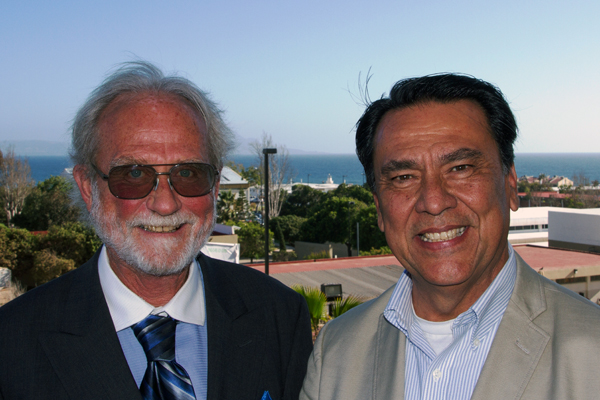 |
Image courtesy of Dr. Hans Bertsch
Portrait (aquarium photo) of 13 mm specimen collected 16 March 2000, nine feet deep, at the western end of W. Islas Gemelos, Bahía de los Ángeles, by Hans Bertsch
Geitodoris mavis Geitodoris mavis (Marcus & Marcus, 1967) This species was one of the 12 described by Marcus & Marcus (1967) with a type locality
of Puerto Peñasco, Sonora (see Bertsch, 2018). It was described from one 24 mm long specimen,
collected 5 March 1966, by Prof. Peter E. Pickens, as Discodoris mavis. Although known
throughout the length of the tropical eastern Pacific marine faunal provinces, it is a relatively rare
species, with only a few records. During the 26-year period from 1984-2010, I observed only 14
individuals in the Bahía de los Ángeles region.
Dra. Alicia Hermosillo McKowen did not report its occurrence during her remarkable study of
the Bahía de Banderas nudibranchs. Description: Body color dark orange, covered with small, dark brown tubercles. Tips of gills
and rhinophores white. Size: To 0.8 inches. Habitat: Intertidal and shallow subtidal, under
rocks. Distribution: Northern Gulf of California to Costa Rica and the Islas Galápagos.
Remarks: Radular differences easily separate this genus from Discodoris. The southern
Californian G. heathi (MacFarland, 1095) may be its sister species. Descripción: El color del cuerpo es anaranjado obscuro, cubierto de pequeños tubérculos café
obscuro. Las puntas de las branquias y de los rinóforos son blancos. Tamaño: Mide 20 mm.
Hábitat: Se encuentra debajo de rocas de la zona intermareal y en la parte somera del submereal.
Distribución: Se localiza desde la parte norte del Golfo de California hasta Costa Rica y las Islas
Galápagos. Observaciones: Diferencias radulares fácilmente separan a este género de
Discodoris. Geitodoris heathi (MacFarland, 1905) de la parte sur de California, puede ser su
especie hermana. (Information above was modified from
Invertebrados Marinos del Noroeste de México / Marine
Invertebrates of Northwest Mexico, by Hans Bertsch & Luis E. Aguilar Rosas (2016, page 274). References Bertsch, Hans. 2018. A history of people, slugs and type localities at Bahía de los Ángeles, Gulf
of California: some recollections. The Festivus 50 (3): 179-197. Hermosillo González, Alicia. 2006. Ecología de los opistobranquios (Molluscla) de Bahía de
Banderas, Jalisco-Nayarit, México. Tesis de Doctorada, Universidad de Guadalajara,
Centro Universitario de Ciencias Biológicas y Agropecuarias. viii + 151 pp. Marcus, Eveline & Ernst Marcus. 1967. American Opisthobranch Mollusks. Studies in
Tropical Oceanography, Miami. viii + 256 pp.
Geitodoris mavis and Anteaeolidiella chromosoma
(respectively 20 and 10 mm long). In
situ photo taken at Punta la Gringa, BLA,
11 feet depth, on 23 March 2010, by Dr. Christopher L. Kitting.

Imperial Beach, Calif
Jun., 2019
Send Hans email at hansmarvida@sbcglobal.net
Hans Bertsch and Luis E. Aguilar Rosas in Ensenada.
Photo by Craig Hoover.
